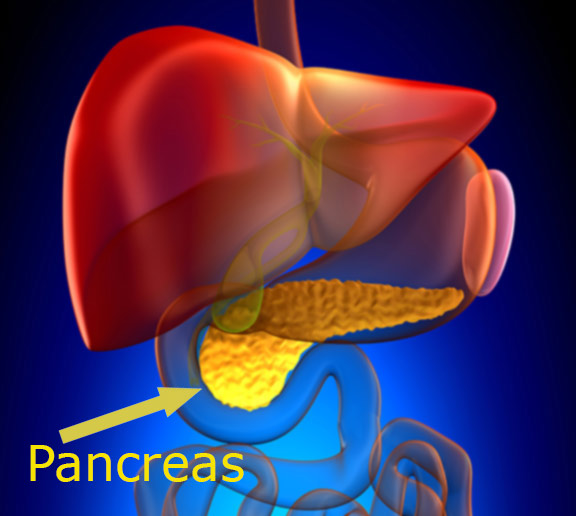UDA Training: Diabetes Basics
Diabetes Aide TrainingComplete all of the following modules:
As you complete this training course the RN responsible for delegating the task of insulin administration should be available to discuss the content and answer your questions.
Diabetes Basics
Diabetes is defined as a disorder of metabolism. Persons diagnosed with diabetes have bodies that do not make or use insulin appropriately. Insulin is a life sustaining hormone that is made in the pancreas, an organ inside the abdomen.
What does insulin do?
Insulin is the hormone responsible for transporting or moving glucose (or sugar) from the blood stream into the cells of the body.
The food people eat is broken down and made into glucose by the digestive system. The glucose is then moved into the body’s blood stream. Insulin is released from the pancreas and enters the blood stream to transport the glucose into the body’s cells. Once the glucose is in the cells the body can use it for energy.
Diabetes is caused by a loss of insulin. Without insulin the glucose stays in the blood stream. When the glucose stays in the bloodstream the body’s cells do not get the energy supply they need to function normally.
Who gets diabetes?
Diabetes occurs in people of all ages. The number of people that are diagnosed with diabetes is rising daily. Diabetes is often diagnosed after a blood glucose (sugar) test. A “fasting blood glucose” test is performed when a person hasn’t eaten or drank any liquids other than water for 8 hours. A person is diagnosed with diabetes when their fasting blood glucose level is 126 or above, or for any other blood glucose test level that is over 200.
The symptoms of diabetes include:
- Increased thirst
- Fatigue
- Frequent urination
- Blurred vision
- Weight loss
- Nausea
Types of Diabetes
There are three types of diabetes: type 1, type 2, and gestational diabetes. Type 1 and type 2 diabetes are chronic diseases. Each type of diabetes is managed with diet, exercise, and medications as needed.
Type 1
Type 1 diabetes usually occurs in children, starts abruptly and often requires hospitalization. In this type of diabetes the body’s pancreas stops making insulin so insulin must be given to the person. The usual way to give them this needed medication is by subcutaneous (SQ) injection.
Most often insulin is administered using one of the following methods:
- Insulin vial and syringe
- Insulin pen
- Insulin pump
People with type 1 diabetes must closely monitor their blood glucose levels, diet intake, and insulin to maintain blood glucose levels that are as close to normal as possible for that person and as recommended by their health care provider.
Type 2
Type 2 diabetes usually occurs in adults but is also diagnosed in children. It can develop slowly over time
and may not be diagnosed for several years.
This type of diabetes is caused by:
- Decreased amounts of insulin produced by the body’s pancreas
- Increased resistance to the insulin that is produced
Some people with type 2 diabetes can take oral medications to control the diabetes while others may need insulin administered by subcutaneous (SQ) injections.
Risk factors for type 2 diabetes include:
- Being overweight
- Having a family history of diabetes
- Being of an African American, Native American, Asian, Hispanic or Pacific Islander Ethnicity
Gestational
Gestational diabetes occurs during a woman’s pregnancy and is a result of the body’s increased need or demand for insulin as her pregnancy develops. This type of diabetes is treated with diet and exercise and sometimes medications. When the baby is born the gestational diabetes disappears. It is important for women who have had gestational diabetes to know that they are at high risk for developing type 2 diabetes.
Managing diabetes
When someone has diabetes, the body’s pancreas either does not make enough insulin or it quit making insulin altogether. Without enough insulin blood glucose levels rise and the cells are unable to function without a source of energy. The lack of insulin results in high blood glucose levels that can be dangerous and may cause damage to the organs of the body. When a person’s blood (sugar) glucose levels are poorly managed this can lead to other medical problems including increased risk of developing heart disease, stroke, kidney disease, and infections that lead to amputations of limbs.
When a person has diabetes, several things can raise and lower blood glucose levels:
Managing diabetes involves balancing food intake with medications and exercise. Changes in any of these factors can affect the blood glucose. Blood glucose monitoring is also an important step in taking care of diabetes. Blood glucose values guide changes to treatment and identify emergency needs. The ability to self-manage diabetes depends on age, dexterity and ability to problem solve. Young children and older adults often need help with all aspects of diabetes care including monitoring, insulin administration, and problem solving. Discuss with your delegating RN the appropriate assistance needed for the person with diabetes in your setting. Diabetes management involves blood glucose testing, medication management, diet management and monitoring of activity.
As a Diabetes Aide you will need to know:
- When and how to test blood glucose
- How to administer medication/insulin correctly
- How to manage diet and count carbohydrate; and
- How to treat high and low blood glucose
Diabetes Aides need to be familiar with the physician orders and/or Diabetes Medical Management Plan (DMMP) for the student or resident. These orders guide and direct safe care for that person. Discuss with your delegating RN the unique orders, care plan, or DMMP you are expected to follow.
An example of a DMMP is available on the American Diabetes Association’s website: http://www.diabetes.org/living-with-diabetes/parents-and-kids/diabetes-care-at-school/written-care-plans/diabetes-medical-management.html


